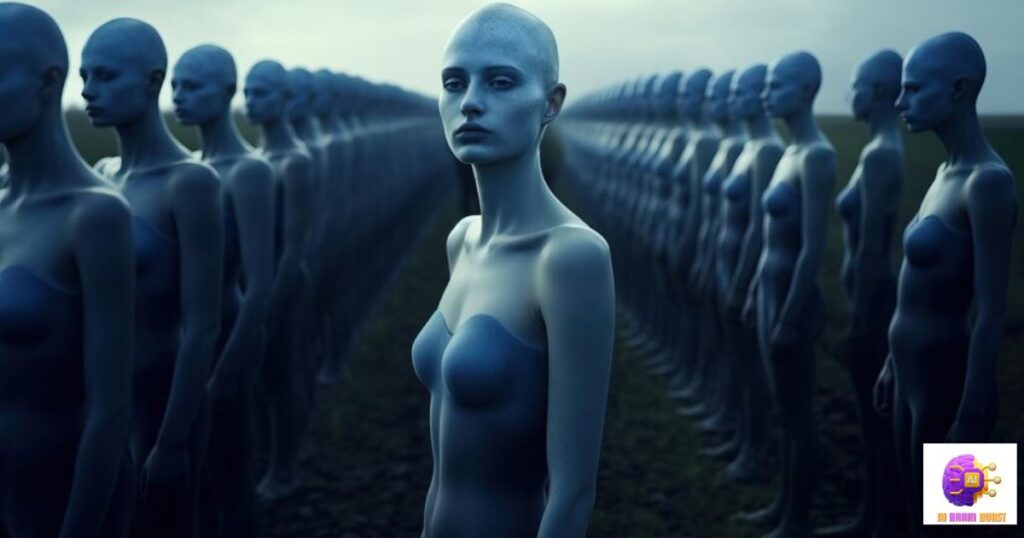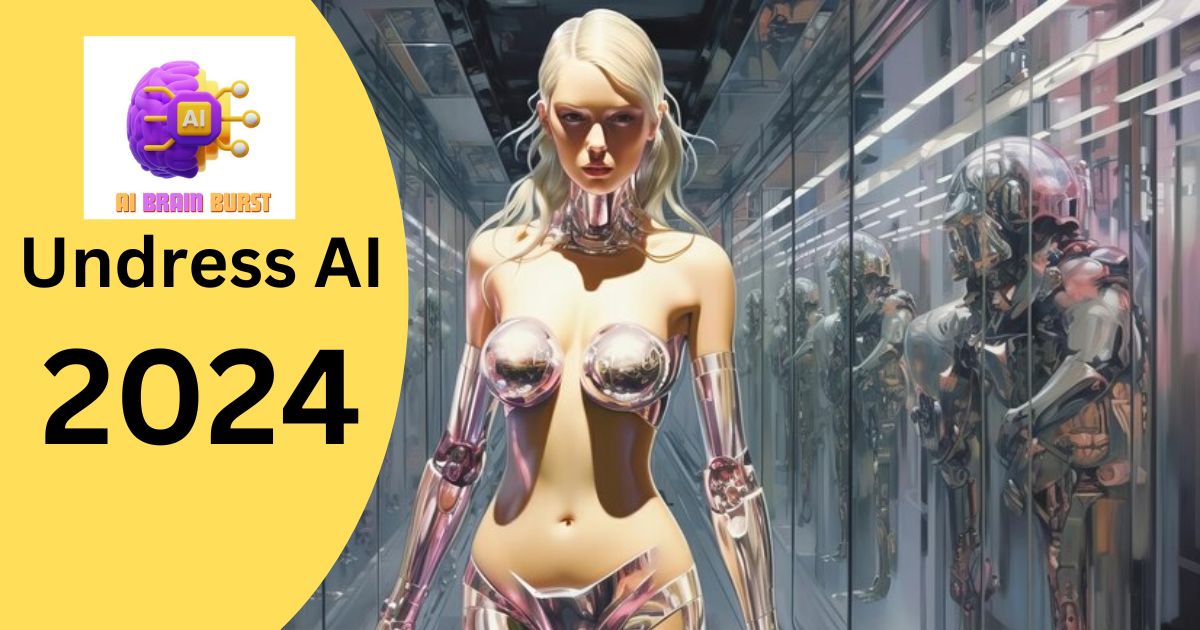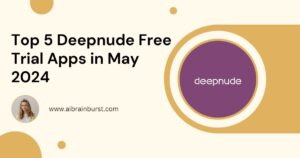Undress AI tools have become increasingly popular in recent years. These controversial apps claim to be able to digitally remove clothing from photos of clothed people. But how well do they actually work, and are they legal and ethical to use? This comprehensive guide will cover everything you need to know about Undress AI.
What is Undress AI?
Undress AI refers to artificial intelligence applications that can digitally remove clothing from images of clothed individuals. The technology works by analyzing portrait photos and using deep learning algorithms to replace clothed areas with an estimation of what that part of the person’s body would look like nude.
The tools are designed to be easy to use. Many Undress AI apps allow users to simply upload a photo, click a button, and have the app generate a new nude version. Some services boast the ability to undress photos in just one tap, making the login to Claude AI seamless and efficient.
How Does Undress AI Work?
Undress AI tools rely on generative adversarial networks (GANs) to replace clothed areas with synthetic nude imagery. GANs use two competing neural networks – one generates the nude image, the other discriminates between real and fake images. This adversarial process causes the images to become increasingly realistic over time.
The apps are trained on large datasets of nude portraits to learn what the human body looks like without clothes. Algorithms analyze features like body shape, skin tone, shadows, and textures to digitally recreate convincing naked imagery.
Key Features
- One tap functionality – Most Undress AI apps allow users to undress a photo in a single click after uploading.
- Free web apps – Many Undress AI services are available for free through web interfaces that allow users to undress photos right in the browser.
- Mobile apps – Some services have mobile apps that provide the nudity-generating capabilities on iOS and Android devices.
- User-friendly – The apps are designed to be simple to use, often not requiring any technical expertise.
- Fast processing – Results are typically delivered in less than a minute per image.
- Clothes removal only – The AI focuses on removing clothing, not altering or enhancing body shape or features.
Is Undress AI Safe to Use?

The safety and ethics of Undress AI continue to be debated. Potential risks include:
- Privacy violations – Undressing photos without consent raises privacy concerns, especially if shared or leaked.
- Deepfakes – Synthetic nude imagery could potentially be misused to create nonconsensual deepfake porn.
- Promoting objectification – Critics argue the technology promotes objectifying attitudes towards women.
- Unrealistic beauty standards – The AI nude images represent idealized bodies, reinforcing unrealistic beauty expectations.
Despite these risks, some argue Undress AI can be used ethically if handled responsibly. Supporters say nudity alone is not inherently unethical, and the technology could even have benefits like promoting body positivity.
Ultimately, the responsible use of Undress AI depends heavily on context and consent. Caution is advised, and users should carefully weigh risks and motivations before undressing any photos, especially of people other than oneself.
Top Free Undress AI Apps
For those seeking to test the technology, several free Undress AI web apps and services currently exist:
- Undress.app – Browser-based app that removes clothes from photos in one click.
- Undress.Love – Free site allowing instant photo undressing. Also offers paid memberships.
- SoulGen – Web app powered by AI to generate nude portraits.
- Nudify – Free online Undress AI with unlimited high-quality results.
- PromptChain AI – Generates nude images through text prompts and image uploads.
- Candy AI – An online app that undresses using AI algorithms.
These free services offer an introduction to Undress AI capabilities and performance. However, ethical and legal considerations should always be carefully evaluated before use.
The Bottom Line
Undress AI represents a controversial new application of AI with significant ethical implications. While the technology continues to advance in capability, users should weigh risks and motivations seriously. When used appropriately with consent, Undress AI may have some legitimate purposes. But nonconsensual use raises grave privacy and ethical concerns that cannot be ignored. As with any powerful technology, human responsibility is key to determining whether Undress AI ultimately causes more harm than good.
Is Undress AI Legitimate?
There is ongoing debate around whether Undress AI technology should be considered legitimate and legal. Here are some key perspectives:
Arguments That It Is Illegitimate:
- Nonconsensual nudity – Removing clothes from photos without permission violates consent and privacy rights.
- Unethical purposes – The main use case seems to be creating naked imagery for prurient interests without consent.
- Objectification concerns – Some argue the technology promotes harmful objectification, especially of women, by focusing solely on bodies as nude objects.
- Deepfake worries – The synthetic nude images can be used to create nonconsensual deepfake pornography.
- Legal grey area – Undress AI exists in a legal grey zone, with usage potentially violating harassment, defamation and revenge porn laws.
Arguments That It Is Legitimate:
- AI is neutral – Like any technology, AI is ethically neutral – it depends on how it’s used. Undress AI itself is not inherently malign.
- Consented use – Between consenting adults sharing nude portraits privately, it can be seen as a legitimate purpose.
- Education/medicine – Some propose applications in anatomy education or for computer vision medical research.
- Regulate carefully – Thoughtful regulations could legitimize ethical uses that respect consent and women’s rights.
- Right to nudity – Most cultures allow nudity in appropriate contexts. Some argue this right could extend to AI-generated nudity.
The Verdict: It’s Complicated
- Undress AI inhabits a complex ethical and legal territory lacking clear consensus.
- For now it remains highly controversial and opposed by many as an unethical technology.
- More conversations are needed around consent, women’s issues and both risks and benefits.
- Any legitimate applications seem limited given nonconsensual downsides. But the debate continues evolving.
Is Undress AI Accurate and Convincing?
How well does Undress AI actually work in practice? Can it realistically undress photos in a convincing manner? Here’s an assessment:
Performance Factors:
- Image quality – Higher resolution portraits yield better results. Grainy or blurred pics are harder to process.
- Body visibility – Images must show enough of the person’s body for the AI to infer nudity. Obscured bodies are a challenge.
- Pose – Unique or unusual poses make it harder for the AI to generate accurate nude imagery. Standard standing poses work best.
- Clothing type – Tight and sheer clothing is easier to digitally remove versus bulky or layered outfits.
Capabilities and Limitations:
- On high quality, standard pose portraits of light clothed subjects, the AI can often produce decent nude approximations.
- However, the quality is not yet photorealistic. There are often flaws like distortions, blurred areas and phantom limbs.
- For most photos, the nude results are not yet convincing enough to appear real at close inspection.
- The tech is advancing steadily, but still has limitations, especially on unconventional images.
The Verdict:
- Undress AI has made impressive progress, but still has a ways to go. For many photos, flawed results reveal it as synthetic AI nudity.
- Ethical issues aside, the technology does not yet seem capable of undetectable nude deepfakes, limiting the scale of risks.
- But continued improvements could eventually make completely convincing AI undressing possible in the near future.
Recommendations for Responsible Use
If choosing to explore Undress AI, here are some recommendations to ensure it is used ethically:
- Only undress photos of yourself or others who have expressly consented.
- Do not share or distribute any undressed images without permission from the subject.
- Be mindful of how the technology could impact perceptions of women’s bodies and consent.
- Use apps from reputable developers who prioritize ethics and will not misuse your data.
- Understand the legal risks – in many contexts, usage may still violate harassment and revenge porn laws if images are shared.
- Remember that even consensual use promotes the development of a technology many consider unethical.
- Consider donating to women’s organizations working to counteract the harms of objectification and misuse of women’s images.
While no use of such controversial technology is entirely risk-free, following ethical principles like consent, privacy and social conscientiousness can help mitigate those risks. But restraint may be the wisest choice given lingering ethical concerns surrounding Undress AI as a whole.
Potential Legitimate Use Cases
While deeply controversial, there may be some potential legitimate uses of Undress AI if handled extremely ethically and responsibly:
Artistic Photography
- With full informed consent, artists could use the technology to create unique nude portraits for galleries, books, or private sharing between partners.
Medical Applications
- Healthcare professionals propose uses for anatomy visualization and computer vision training to detect medical conditions from nude images.
Naturism Content
- Nudist websites argue it allows them to share nude portraits that comply with their non-sexual ethos when photography is prohibited.
Sexual Wellness
- Some argue it provides a safer avenue for nudity between consenting adults compared to proliferation of porn with ethics concerns.
Body Positivity
- People with insecurities may privately use it to view themselves nude as a self-esteem exercise to promote body acceptance.
Forensic Investigations
- Government forensic experts theorize potential applications for reconstructing nudity in criminal investigations involving pornography.
However, all these proposed use cases come with caveats about consent, privacy, objectification harms, and the need for extreme caution to prevent misuse. Most critics argue any potential benefits simply do not outweigh the significant risks.
Alternatives to Undress AI

Given the considerable ethical concerns, what are some alternatives to Undress AI that are less problematic?
- Traditional nude portraits – Consider collaborating with a photographer and model who ethically create real nude images through artful photography, with proper consent.
- Computer-generated art – Explore CG animation, 3D rendering, and other synthetic imagery that does not base its creations on real people.
- Ethical pornography – Seek out ethically-produced adult content from producers committed to consent, rights and fair treatment of performers.
- Erotic literature – Written erotica allows exploration of nudity and sexuality purely through imagination and words.
- Education – Learn about human anatomy through medical resources, textbooks and courses rather than AI-modified photos.
- Self-reflection – Examine your motivations and whether unhealthy attitudes towards objectification or consent underlie your interest in AI nudity tools.
The ideal approach depends on each individual context. But it is worth considering alternatives that avoid commodification of bodies and respect the dignity of women and consent.
In summary, Undress AI remains an ethically questionable technology still lacking a clear constructive purpose that cannot easily be achieved through other preferable means. Tread carefully and think critically before buying into any claims that it can be used in an entirely ethical manner free of harm. There are nearly always better alternatives available.
Conclusion
Undress AI remains an ethically questionable technology still lacking a clear constructive purpose that cannot easily be achieved through other preferable means. Tread carefully and think critically before buying into any claims that it can be used in an entirely ethical manner free of harm. There are nearly always better alternatives available.
Frequently Asked Questions about Undress AI
Is the undress app legal?
The legality of Undress AI tools is unclear and untested in courts. There are arguments on both sides. Some laws around harassment, defamation and nonconsensual pornography may apply. But in many jurisdictions, usage in private contexts is currently not illegal. However, ethical concerns remain.
Is the AI that undresses real?
Yes, the AI technology itself is real – deep learning algorithms can now digitally remove clothing from photos with varying degrees of realism. But the resulting nude images are artificial creations, not real nude photos of the individuals.
What is the use of undress AI programs?
The primary use case seems to be creating nude imagery for sexual interests or amusement. Some argue medical or forensic applications, but these are limited and controversial. Most experts advise extreme caution with this technology due to ethical concerns.
Can AI remove clothes from photos?
In many cases, yes AI can now replace clothed areas of portrait photos with artificially generated depictions of nudity. The realism continues to improve, but flaws and distortions still give away that it is AI-generated synthetic nudity rather than authentic.
Is AI clothes removal illegal?
It depends on context, motive and jurisdiction. Nonconsensual application of the technology or distribution of its nude images most likely violates laws around sexual harassment, defamation and revenge porn. In private use between consenting adults where images stay private, it may not be illegal but still unethical.
Are AI images illegal?
Synthetic AI-generated images do not inherently constitute illegal content. But the application of the technology can easily cross legal lines depending on circumstances like consent, distribution, harms caused, and commercial usage. Any usage of AI to generate or alter nude images warrants careful legal review first.








